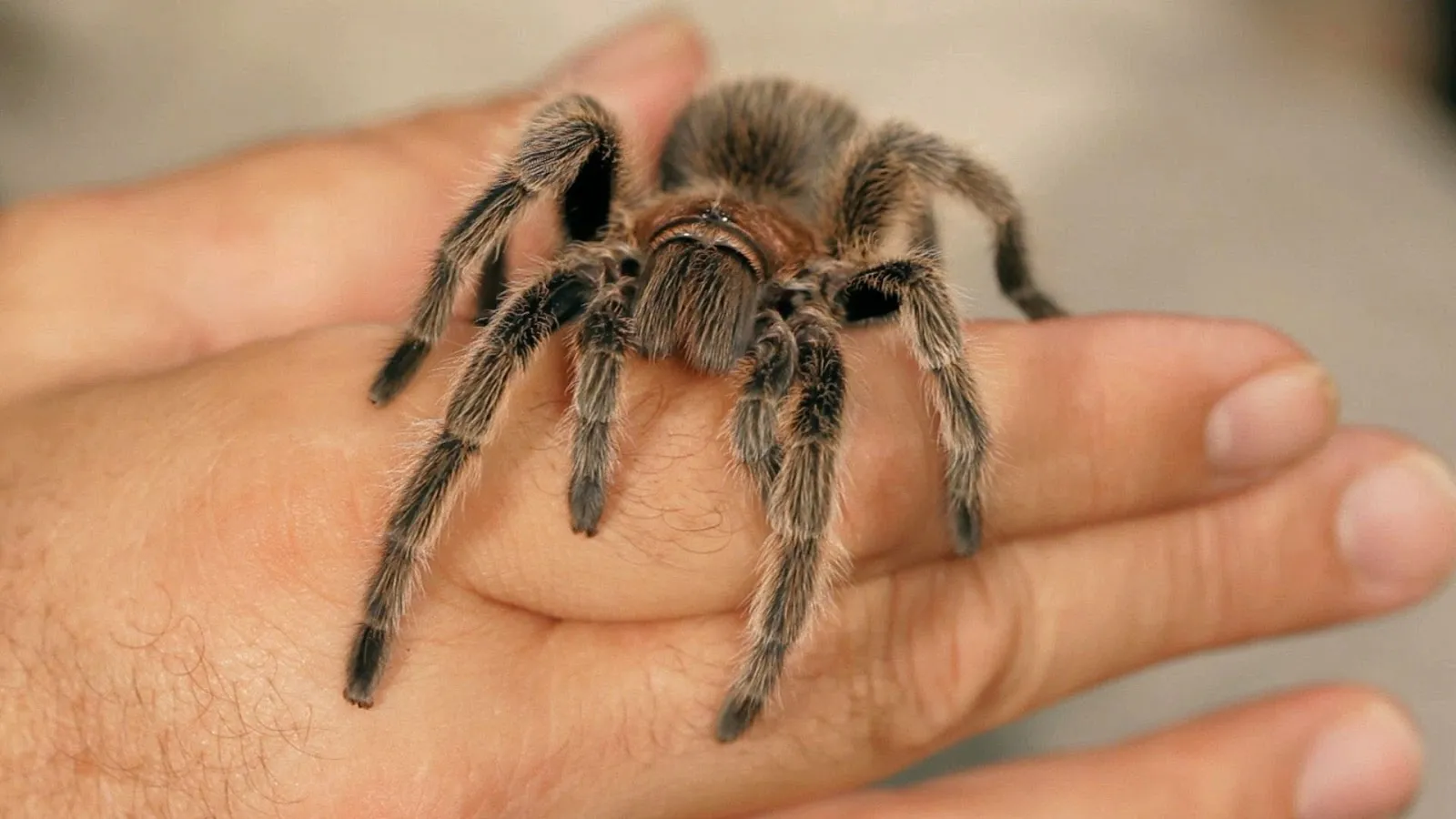Choosing Your First Tarantula
Embarking on the journey of owning a tarantula can be incredibly rewarding, offering a unique perspective on the natural world. These fascinating creatures, with their intricate behaviors and striking appearances, make for captivating pets. However, responsible tarantula ownership starts with careful consideration and informed decision-making. Before you bring a tarantula into your home, it’s essential to understand the commitment involved, from providing the right habitat to ensuring their well-being. This guide, ‘Tarantula Care 101 Your Ultimate Guide,’ aims to equip you with the knowledge necessary to become a successful and compassionate tarantula owner. We will cover everything from selecting the right species to understanding their specific needs and providing a thriving environment.
Considerations Before Buying a Tarantula
Before you welcome a tarantula, consider several factors. First, assess your lifestyle and whether you can dedicate time to daily care. Tarantulas require regular feeding, habitat maintenance, and observation. Research local regulations regarding exotic pets, as some areas restrict certain species. Consider any allergies in your household. Most importantly, educate yourself about the specific species you are considering. Understanding their natural habitat, dietary needs, and temperament will guide your decision and ensure you provide appropriate care. Are you prepared to handle live insects for food? Do you have a safe space away from pets and children? Think about your comfort level with arthropods.
Tarantula Species Research
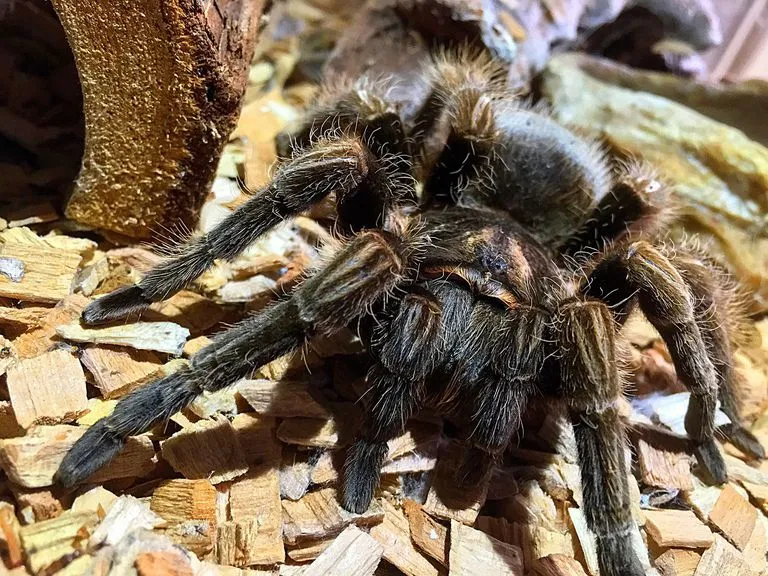
The world of tarantulas is incredibly diverse, with hundreds of species varying in size, temperament, and care requirements. Researching different species is crucial for finding the right fit for your lifestyle and experience level. Some popular beginner-friendly species include the Chilean Rose Hair Tarantula (Grammostola rosea), known for its docile nature, and the Mexican Red Knee Tarantula (Brachypelma hamorii), which is also relatively gentle. Explore online resources, books, and reputable breeders to learn about each species’ specific needs, including their ideal temperature, humidity, and enclosure size. Look into the temperament of different species as some are more defensive or skittish than others. Consider the adult size of the tarantula, as this will determine the size of its enclosure and the amount of space you’ll need to dedicate to its care.
Understanding Tarantula Temperament
Tarantula temperaments vary significantly between species and even individuals. While some tarantulas are docile and slow-moving, others may be more defensive, skittish, or prone to biting. Understanding the typical temperament of a species is crucial for safe handling and minimizing stress for both you and your pet. Research the defensive behaviors common to your chosen species, such as flicking urticating hairs (a defense mechanism that can cause skin irritation) or adopting a threat posture. Note that even docile species can bite if they feel threatened, so always approach your tarantula with caution and respect. Observe your tarantula’s behavior regularly, noting any changes in its activity level, appetite, or posture, as these can indicate stress or illness.
Setting Up the Perfect Tarantula Enclosure
A well-designed enclosure is essential for a tarantula’s health and well-being. The enclosure provides a safe, secure environment that mimics their natural habitat and allows them to thrive. The enclosure must be appropriately sized, considering the species and the tarantula’s size. It should also be equipped with suitable substrate, hiding places, and other environmental elements to replicate its natural environment. Creating a suitable environment will not only keep your tarantula healthy but will also allow you to enjoy it while providing a secure, engaging, and enriching habitat, promoting natural behaviors such as burrowing, hunting, and molting. A well-designed setup minimizes stress, reduces the risk of injury, and enhances your enjoyment of your unique pet.
Enclosure Size and Type
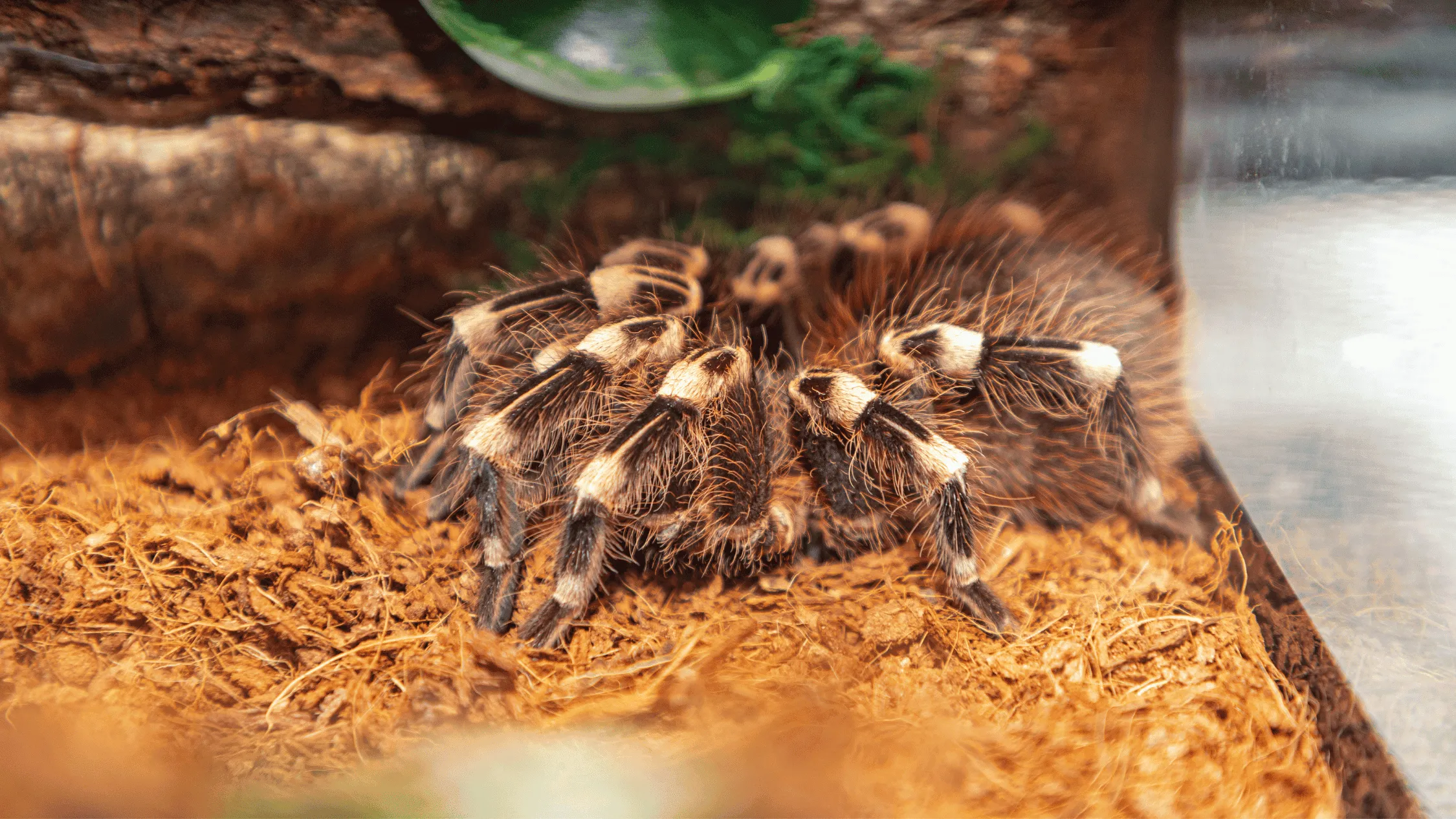
The enclosure size should be based on the tarantula’s adult size. A good rule of thumb is to provide an enclosure that is at least twice as wide as the tarantula’s leg span. Terrestrial species require more floor space, while arboreal species need more height for climbing. Choose an enclosure made of clear material, like glass or acrylic, for optimal viewing. Ensure the enclosure has secure ventilation to regulate humidity and prevent mold growth. Consider whether your tarantula is terrestrial or arboreal when selecting the enclosure, as this will influence the height and overall dimensions. Ensure the enclosure has a secure lid to prevent escapes, as tarantulas are skilled climbers and escape artists. Always check the enclosure frequently for any signs of damage or wear and tear, and replace it if necessary.
Substrate and Decor
The substrate provides a comfortable surface for the tarantula to walk on, burrow in, and molt. Choose a substrate that holds moisture well and doesn’t mold easily. Popular options include coco coir, peat moss, and a mix of these with vermiculite or sphagnum moss. Avoid using substrates with sharp edges that could injure your tarantula. Add decorations that mimic the tarantula’s natural habitat. Provide a hide, such as a cork bark, half log, or artificial cave, where the tarantula can retreat and feel secure. Include a water dish and any other decorative elements that enhance the habitat’s aesthetic appeal, like artificial plants. Ensure all decorations are non-toxic and securely placed to prevent them from falling and potentially harming the tarantula. Regularly monitor the substrate for moisture and replace it as needed to maintain a clean and healthy environment.
Temperature and Humidity Control
Tarantulas thrive in specific temperature and humidity ranges. Research the ideal conditions for your species. Use a thermometer and hygrometer to monitor the temperature and humidity levels. Maintain the appropriate temperature using a heat mat placed on the side of the enclosure, a ceramic heat emitter, or a small incandescent bulb. Avoid placing the heat source directly under the enclosure to prevent overheating. Regulate humidity by misting the enclosure with water, providing a water dish, and ensuring adequate ventilation. The substrate should be slightly moist, not wet, to prevent mold growth. Periodically check and adjust the temperature and humidity levels as needed to maintain the optimal conditions for your tarantula. The appropriate temperature and humidity levels are critical for the tarantula’s health, molting process, and overall well-being.
Feeding Your Tarantula
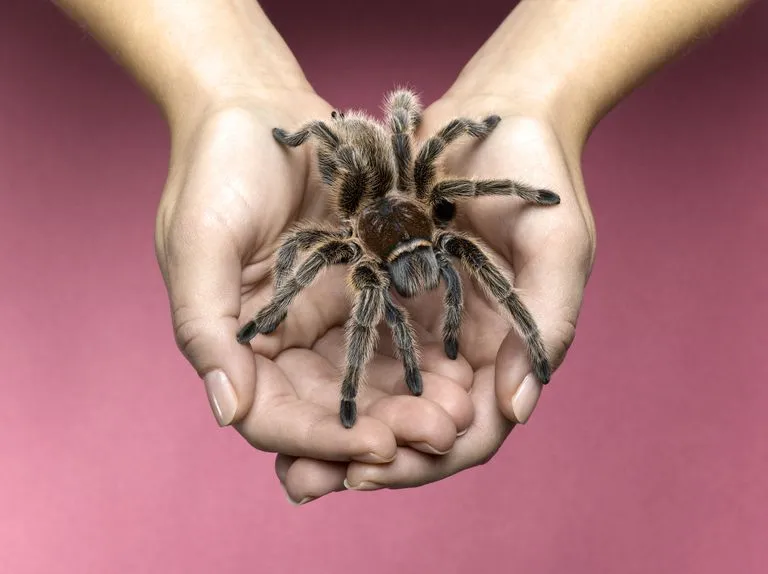
Feeding your tarantula properly is essential for its health and longevity. Provide a balanced diet of appropriately sized insects and ensure access to fresh water. The frequency and amount of food will vary depending on the tarantula’s species, age, and size. Understanding the nutritional needs of your tarantula and providing a consistent food supply will lead to a happy and healthy pet. This section will cover how to choose the right food, how frequently to feed, and how to ensure your tarantula stays properly hydrated.
Choosing the Right Food
The most common food source for tarantulas is insects. Crickets, mealworms, dubia roaches, and super worms are all good options. The insects should be gut-loaded before feeding them to your tarantula, which means feeding them a nutritious diet to enhance their nutritional value. The size of the prey should be appropriate for the tarantula’s size; as a general guideline, the prey should be no larger than the tarantula’s abdomen. Avoid feeding wild-caught insects, as they may carry parasites or pesticides. The type of food that you choose should be based on the species of your tarantula and any specific dietary needs. Ensure the insects you feed are live and healthy, and keep them in a clean, well-ventilated container before feeding.
Feeding Frequency and Amount
Young tarantulas require more frequent feeding than adults, typically once or twice a week. Adult tarantulas can be fed once every one to two weeks, depending on their metabolism and appetite. Observe your tarantula’s abdomen; if it appears thin, it may need more food. If the abdomen is too large, it may be overfed. Remove any uneaten food within 24 hours to prevent mold and mites. Avoid overfeeding, as this can stress the tarantula. Monitor the size and frequency of feeding as the tarantula grows. During molting, tarantulas may refuse food, which is normal; do not force-feed them. Adjust the amount and frequency of feeding based on the tarantula’s age, size, and activity level.
Providing Water for Your Tarantula
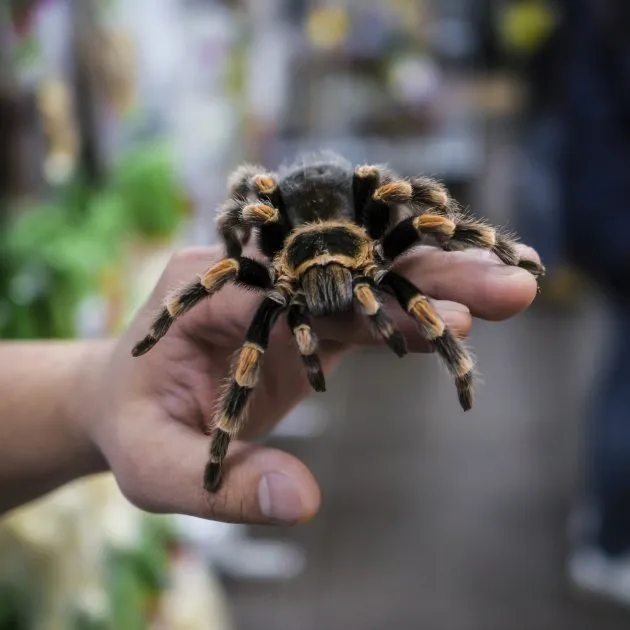
Tarantulas need access to fresh water at all times. Provide a shallow water dish that is easily accessible and not too deep. Ensure the water dish is stable and won’t tip over. Replace the water regularly to keep it clean. For smaller tarantulas, you can use a bottle cap or a cotton ball soaked in water as a water source. Some keepers mist their enclosures to provide water droplets for their tarantulas to drink, particularly for arboreal species. Always check the water source daily and refill as needed to ensure your tarantula stays properly hydrated. Maintaining proper hydration is vital for your tarantula’s health and helps it during molting.
Tarantula Handling and Safety
Handling a tarantula should be done with caution, as it poses risks to both the tarantula and the handler. While some tarantulas are docile, others can be defensive and bite. Understanding the risks and taking the necessary precautions is essential for ensuring a safe experience. Proper handling techniques, along with knowing when to avoid handling, will reduce the risk of injury to both you and your tarantula. Always prioritize the tarantula’s well-being and respect its space.
When to Avoid Handling
There are several situations in which you should avoid handling your tarantula. During molting, the tarantula is extremely vulnerable, so it’s best to leave it undisturbed. Avoid handling if the tarantula is showing signs of stress, such as a threat posture, rapid movements, or excessive hair-flicking. Do not handle a tarantula soon after feeding, as it may be more likely to bite. It is best to avoid handling any tarantula if you are unsure of the species’ temperament or if you have little experience with handling them. Always observe the tarantula’s behavior to gauge its mood and avoid handling it if it seems agitated or defensive. The safety of both you and the tarantula should always come first.
Safe Handling Techniques
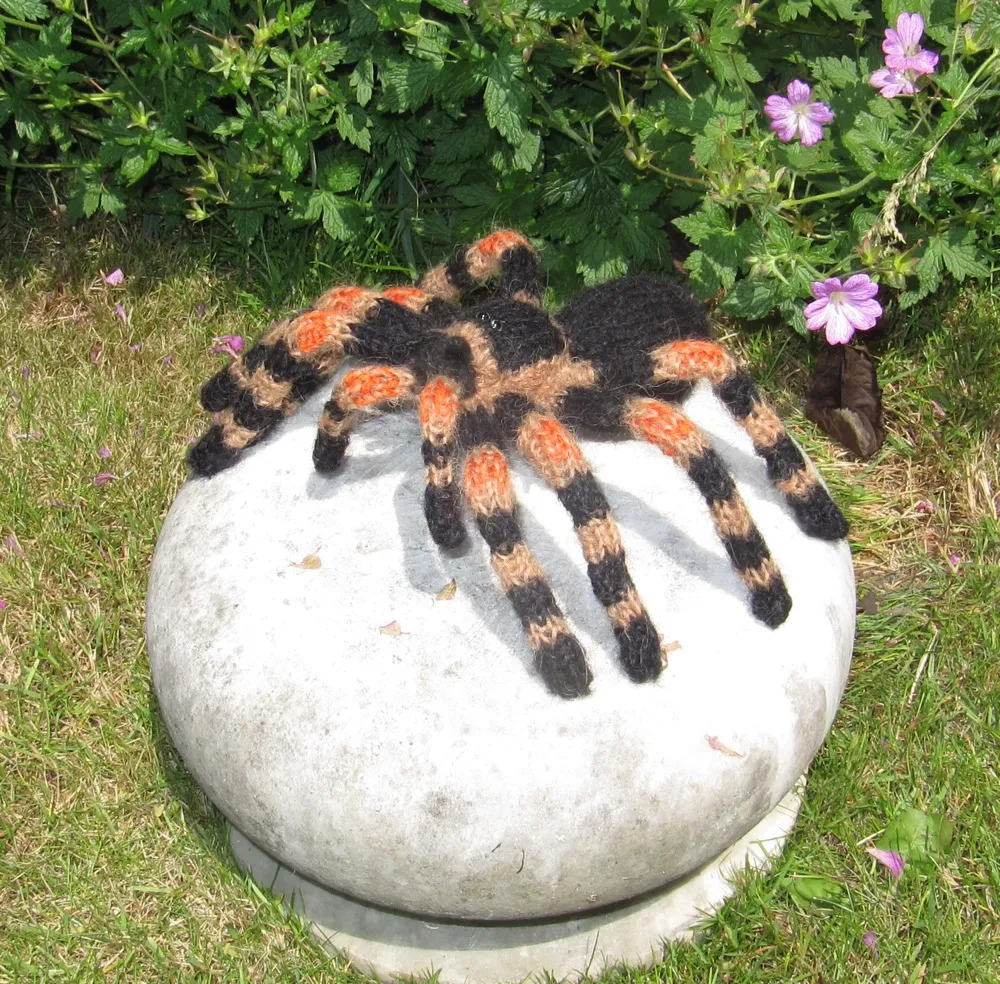
If you choose to handle your tarantula, do so with extreme care. Handle the tarantula over a soft surface, such as a bed or carpet, in case it falls. Gently encourage the tarantula to walk onto your hand, avoiding any sudden movements that could startle it. Keep your movements slow and deliberate, and avoid squeezing or grabbing the tarantula. Always wash your hands thoroughly before and after handling to remove any potential contaminants. Be aware of the tarantula’s urticating hairs, which can cause skin irritation; avoid rubbing your face or eyes after handling. If the tarantula shows signs of aggression, such as raising its front legs or displaying its fangs, gently put it back into its enclosure and do not attempt to handle it. Prioritize the tarantula’s comfort and well-being during handling.
Recognizing and Addressing Health Issues
Like all pets, tarantulas can experience health issues. Recognizing common problems and knowing how to address them is essential for providing proper care. Regular observation and a keen understanding of healthy tarantula behavior will help you identify potential issues early. This section will address common tarantula diseases, provide guidance on identifying and treating mites, and offer insights into the molting process. Early detection and intervention are key to maintaining your tarantula’s health and ensuring a long, happy life.
Common Tarantula Diseases
Tarantulas are generally hardy, but they can be susceptible to certain diseases. Bacterial infections can occur if the enclosure is not kept clean and dry. Symptoms include lethargy, loss of appetite, and discoloration of the abdomen. Fungal infections, often caused by high humidity and poor ventilation, can manifest as lesions or discoloration. Parasites can also pose a threat. If you suspect your tarantula is ill, quarantine it and consult a veterinarian experienced in exotic pets. Maintain a clean and healthy environment to prevent disease and recognize the early signs of illness so you can take the appropriate steps to ensure your tarantula’s good health.
Identifying and Treating Mites

Mites are a common problem in tarantula enclosures, often appearing as tiny, moving dots on the tarantula or its substrate. There are several different types of mites that can affect tarantulas. Some mites are harmless, while others can be parasitic and detrimental to the tarantula’s health. Identify the mites by their appearance and behavior. If you suspect mites, remove the tarantula from its enclosure. Clean and disinfect the enclosure, replacing the substrate. If the infestation is severe, you may need to seek advice from a veterinarian experienced with tarantulas. Regular cleaning and maintaining proper humidity levels can prevent mite infestations.
Understanding Molting
Molting is a natural process for tarantulas, in which they shed their exoskeleton to grow. During this process, the tarantula becomes extremely vulnerable. Signs of molting include the tarantula refusing food, becoming lethargic, and possibly turning onto its back. Do not disturb a tarantula during molting. Provide a humid environment to aid the process. After molting, the tarantula will be soft and vulnerable for a few days. Avoid handling the tarantula during this period. Once the exoskeleton hardens, the tarantula will resume normal activity and feeding. Understanding the molting process is critical for ensuring your tarantula’s safety and well-being.
Long-Term Tarantula Care and Maintenance
Long-term tarantula care involves consistent maintenance, ensuring a clean and stimulating environment. This section will provide a detailed guide to cleaning and maintenance schedules, offering tips for enrichment, and fostering a thriving habitat. By adopting a proactive approach to maintenance, you can ensure your tarantula remains healthy, active, and content for years to come. Regular maintenance ensures your pet’s well-being and enhances the overall enjoyment of your tarantula-keeping experience.
Cleaning and Maintenance Schedule
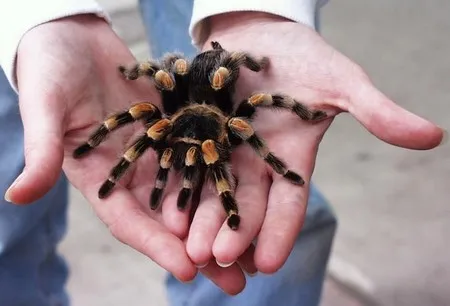
Regular cleaning is essential for maintaining a healthy environment for your tarantula. Spot-clean the enclosure weekly, removing any uneaten food and waste. Replace the water dish with fresh water. Replace the substrate regularly. The frequency of substrate replacement depends on the type of substrate and the size of the enclosure. For example, spot clean the substrate regularly. Deep-clean the entire enclosure every few months, depending on the species and the setup. This includes removing the tarantula (if safe), discarding the old substrate, cleaning the enclosure with a mild disinfectant, and replacing the substrate. Always rinse any cleaning products thoroughly to avoid harming your tarantula. Create a maintenance schedule to keep track of cleaning and other tasks.
Enrichment and Stimulation
While tarantulas may not seem to require the same level of enrichment as some other pets, providing a stimulating environment can enhance their well-being. Add objects to the enclosure for exploration, such as rocks, branches, or artificial plants. Vary the placement of these objects from time to time to provide novelty. Ensure the enclosure is properly sized to allow for movement and exploration. Observe your tarantula’s behavior and make adjustments to its environment to meet its needs. Enrichment can help reduce stress and promote natural behaviors, such as burrowing and web-spinning. Provide a varied diet to stimulate their hunting instincts. Changing the layout of the enclosure, adding new items, and providing different types of prey are all forms of enrichment that you can offer your tarantula.
Enjoying Your Tarantula Companion
Owning a tarantula can be a rewarding experience. Observe your tarantula’s behavior and learn about its unique personality. Take pride in providing a safe and healthy environment for your pet. Enjoy the opportunity to learn about these fascinating creatures and the role they play in our ecosystem. Consider joining a tarantula-keeping community to connect with other enthusiasts and share experiences. Remember that responsible pet ownership is a continuous learning process, so remain informed about the specific needs of your tarantula species. With proper care, you can enjoy the unique companionship and the captivating characteristics of these amazing arachnids for many years to come.
